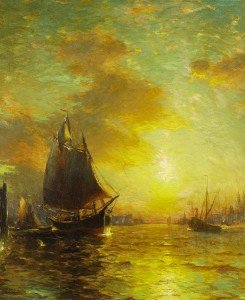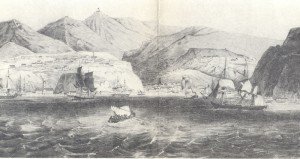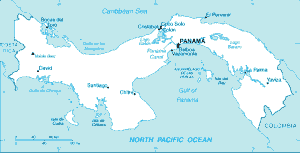An Incredible Journey
While researching the subject of steamboats and the people who piloted them, I came across a very strange, amusing and unique story. The story of the Stolen Boat actually has it’s tragic elements while at the same time is somewhat comical.
Thank you for reading this post, don't forget to subscribe!
It’s the story of a steamboat company whose owners and captain eluded eastern creditors and a sheriff and then managed to relocate the stolen boat to California where it had an illustrious life on the busy Sacramento River. Obviously, a steamboat is not the easiest thing to make off with and certainly not easy to hide. How was this new vessel able to sneak out of New York harbor without being stopped by the sheriff who just happened to be one of the boat’s financial partners and creditors?
What did the sheriff, who also just happened to be on the boat, think when the boilers were suddenly fired up? When asked…the skipper simply replied to the sheriff…”To wear the rust off the bearings and see that the engine worked well”. After riding around in the New York harbor for awhile, the crew then forced the outnumbered sheriff and his deputies off the vessel and headed out to the open sea. Thus the story of the stolen steamboat began.
This is one of those strange but true tales that just needs sharing. Here’s how the adventure began.
The Voyage of the “New World”
The steamboat “New World” was a 530 ton, 320 foot long sidewheeler. A fairly large vessel, the New World was actually built to steam from New York to San Francisco via Cape Horn. As I mentioned in other articles, several of the steamboats on the western rivers were originally from New York and since there was no Panama Canal in 1851, going around the tip of South America was how a boat sailed from New York to California. In the year 1850, at the beginning of the great California Gold Rush, there were some twenty-eight steamboats operating on the Sacramento River. In future years this would only increase.

A Close Call in Rio
The first leg of the trip of the stolen steamboat began after the hasty departure of the New World from New York was Rio de Janiero.
Like many of her sister steamers, the New World endured her share of Atlantic storms. Weather forecasting was non existent and the ocean storms were expected.The storms however were not her major problem on the first leg down to South America. While on the way, the crew and passengers picked up yellow fever. The story down to Rio de Janiero gets even better. While approaching Rio the New World was chased into the harbor by a British frigate since she had no legal paperwork. Apparently, the paperwork was with the boat’s creditors who allegedly were owed a lot of money by it’s owner, William A. Brown. The creditors and the harbor police would not find out until after the fact that the vessel was steaming to California.
The skipper of the New World was a man by the name of Ed Wakeman. Wakeman worked for William Brown. It was under Brown’s instructions that Ed Wakeman was to take the vessel to San Francisco. With a British vessel in pursuit and no papers to show the authorities at Rio de Janeiro, Wakeman came up with an idea to fall overboard. When he was retrieved from the sea soaking wet he explained to the authorities that the papers had been with him in the water and were lost. He convinced the American consul of this tale in Rio and was given the clearance to depart.
Also, see our Trips Into History articles on the Steamboat Natchez and The King of the Steam Boat Men on the Columbia River.
The Much Shortened Quarantine in Valparaiso
Ed Wakeman departed Rio de Janeiro but with eighteen less crewmen who died from the yellow fever. All went well however and the New World successfully rounded Cape Horn and steamed up to Valparaiso Chile. When he reached the coastal city the authorities there demanded that the vessel be quarantined for twenty days. This of course didn’t suit Wakeman. The story is that the captain argued continuously with the authorities and many believe he was pretty liberal in handing out cash to the right people. It’s not sure which did the trick, the arguing or the cash, but nevertheless, he departed from Valparaiso after only eight days.

Captain Ed Wakeman also picked up some useful information while handing out money in Chile. He learned that New York authorities, on behalf of the vessel creditors, were waiting for him in Panama hoping to make an arrest. They also had extradition papers already signed. All they needed was Wakeman in person along with the vessel. A man who had already thrown himself overboard to escape trouble in Rio was not going to steam all the way up to Panama just to get himself arrested and transported back to New York. Ed Wakeman had another plan.
Making New Friends in Panama
Panama was a must stop for any vessel heading up the Pacific coast to San Francisco. Ed Wakeman knew it and so did the New York authorities. But skipper Wakeman had a plan. Instead of steaming right into Panama he went to an island offshore and anchored the vessel on the far side of the island. He then was crafty enough to make his way onshore in Panama. Panama City was filled with gold seekers trying desperately to find passage to San Francisco and ultimately to the California gold fields. These were men who had spent days if not weeks trekking through the malaria filled Panama jungle to make it from the eastern shore to the western side. Being stranded in Panama City waiting for passage was not pleasant.

After coming ashore in Panama, Ed Wakeman looked for several hundred Americans desiring to get themselves to San Francisco. They weren’t hard to find. Captain Wakeman offered them passage on the New World for $300 per man if, and this was a big if, they would intimidate the two deputies from New York and about a ten man guard unit assigned them. After spending a long time in Panama waiting to find a vessel heading north, it didn’t take much convincing. The New York deputies and the guards were threatened by the mob to such an extent that they tore up the extradition papers and fled the country. It was then that Wakeman could bring the New World into Panama and pick up his unexpected paying passengers. The ship left for San Francisco without incident.

The Luck of Captain Ed Wakeman
Three things that worked well in Wakeman’s favor was that in 1850-51, there was no railroad to California where New York authorities could simply send people directly there to retrieve the boat and Wakeman. Secondly, there would be no transcontinental telegraph system for over another ten years. Thirdly, Wakeman was lucky that a California Gold Rush had just begun where large groups of men were willing to do just about anything to gain passage. The route through the jungles of Panama, despite the hardships of the jungle, was more popular than the Cape Horn route or the overland Oregon Trail route. It wasn’t so many years since the ill fated Donner Party tragedy in the Sierra Nevada Mountains.
A New Life on the West Coast
After reaching San Francisco, the New World steamboat found work on the booming Sacramento River. This was the river heading into the gold country from San Francisco. The stolen boat New World ended up spending fourteen years going up and down the Sacramento under the operations of the California Steam Navigation Company. There is no information as to what action, if any, the New York creditors took to get the vessel back. It appears that the boat was sold prior to any action they could have taken in later years.
The New World was sold in the 1860’s to the Oregon Steam Navigation Company which had a monopoly at the time on the northwest rivers. As fate would have it, the New World returned to California after several years and was put in service as the Vallejo Ferry on San Francisco Bay.
In regards to Captain Ed Wakeman, the only information I could uncover was that he apparently lived out his years as a resident of San Francisco. I think we can assume that he didn’t have the urge to visit back east. It’s unknown what money, if any, the vessel’s questionable owner, William A. Brown, received after the boat was sold in California.
There is a great deal of information about the Sacramento River steamboats, including the New World, at the Maritime Museum-San Francisco located at Fisherman’s Wharf.
Another excellent museum regarding the old steamboats of the Columbia River is the Columbia River Maritime Museum in Astoria Oregon.
(Photos from the public domain)
